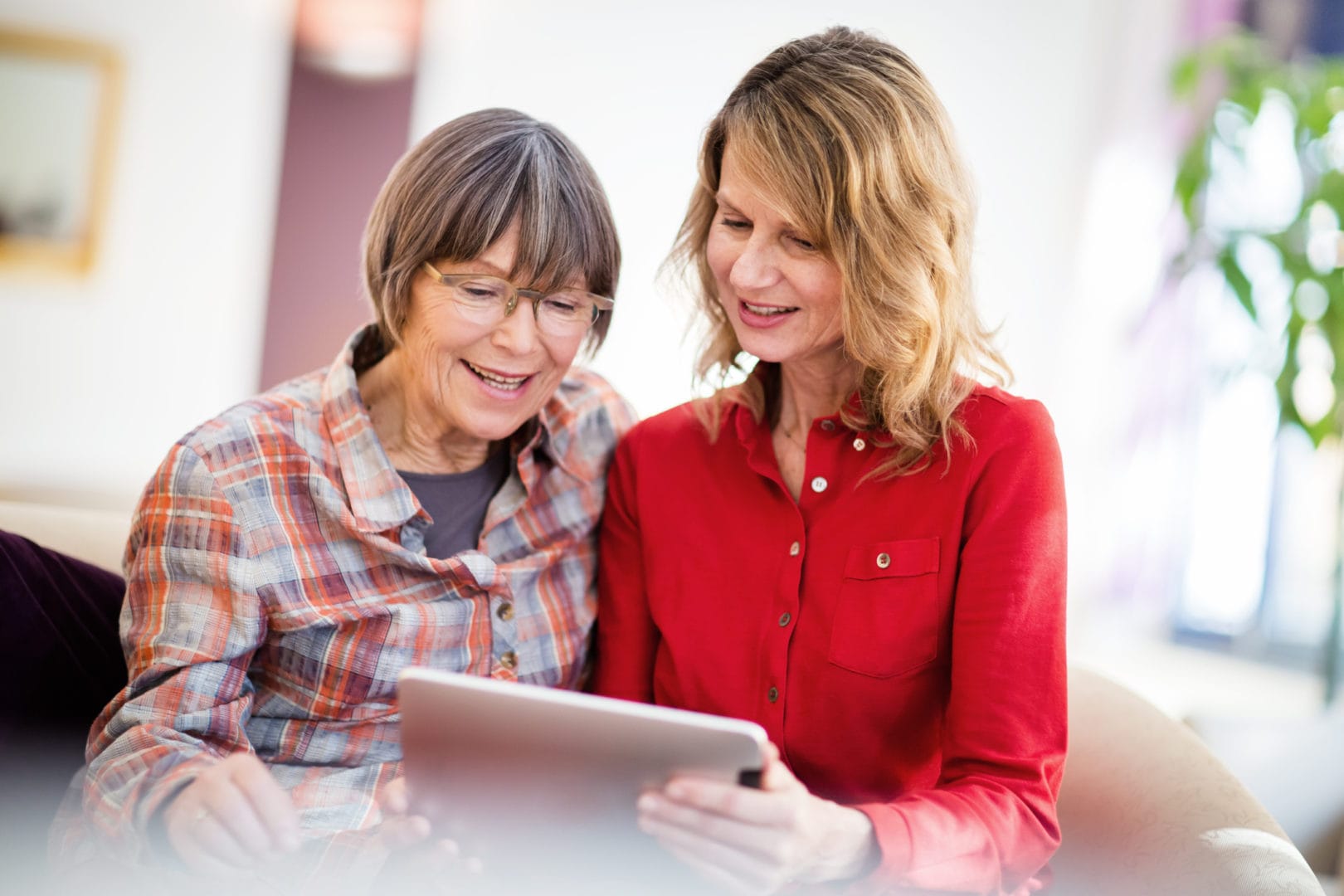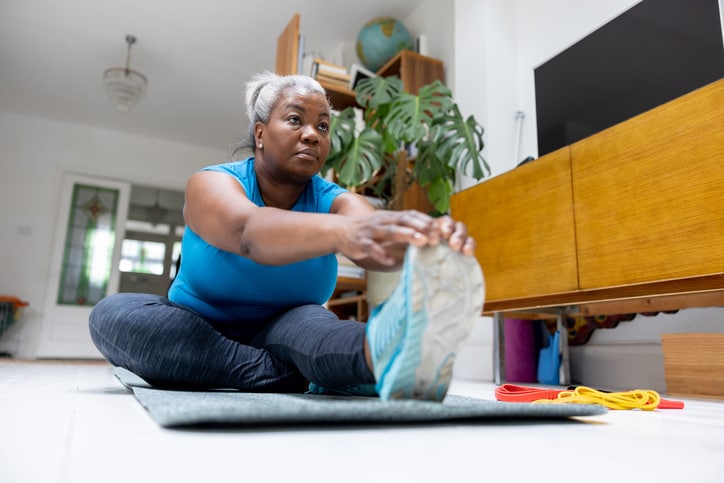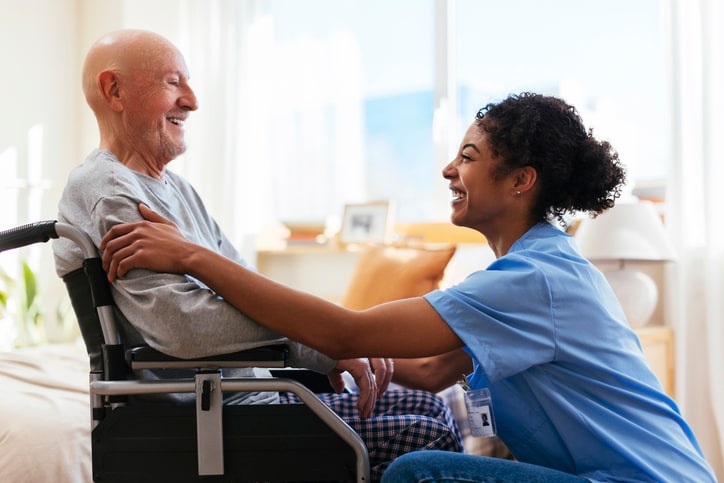Caregiving can be a thankless job, the tasks associated with it monumental. Partners and children unexpectedly pressed into caring for their loved ones soon find themselves out of their depth. These challenges have become even more prevalent this year. According to the Blue Cross Blue Shield Association, 55% of caregivers did not identify as such prior to the pandemic. And as a larger number of family caregivers grapple with the challenge of caring for both themselves and their loved ones, it’s become more important than ever that they have a system in place to stay organized.
When Linda Hoetger’s husband was first diagnosed with an aggressive form of prostate cancer, she began to keep a file filled with information on his diagnosis, the tests he was required to take and the test results. “There is so much information you have to take to the doctor’s office, and sometimes you don’t remember everything. You’re thrown into this, and you hit a brick wall,” says Hoetger.
When you’re the primary caregiver, having the right information at hand can save you a great deal of stress. That’s why we spoke to both caregivers and other gerontological professionals to get tips on creating a catch-all caregiving file.
What to put in your loved one’s caregiving file
1. Basic medical necessities
Michael Bloch, CEO and founder of Pillar, an online organizational platform, recommends gathering a wide range of medical information, including:
-
Insurance information.
-
Doctor and specialist contact information.
-
Preferred labs and pharmacies.
-
Medications and dosages.
-
Preexisting conditions and allergies.
-
Information on commonly used medical devices.
-
Medical bills.
-
Advance directives and a DNR (do not resuscitate) form.
2. Financial information
Bloch says that you must also have access to their loved one’s financial information. This includes their:
-
Bank account information.
-
Info related to their retirement accounts, investment accounts and pension.
-
Life insurance information.
-
Disability benefits.
-
Information on their home, vehicle and other assets.
-
Credit card information.
Caregivers often find themselves in the position of managing their loved one’s bills, bank accounts and other financials, at which point these files become indispensable.
3. Legal documents
Those who use Pillar and other online organizational platforms also often keep track of their loved one’s:
-
Attorneys.
-
Wills.
-
Birth certificate.
-
IDs.
-
Social security.
Caregivers also often retain a power of attorney form, a legal document that proves they have been appointed to act on their loved one’s behalf.
4. Home management logistics
It’s a good idea to put together a checklist of information that allows you to make sure things run smoothly on the home front. This can include everything from housekeeping tasks to home security information.
Tasks that caregivers may have to begin handling single handedly include:
-
Laundry.
-
Dishes.
-
Waste disposal.
-
Changing of bedsheets.
-
Meal preparation.
-
Pet care.
-
General cleaning.
-
Yard maintenance.
5. Device passwords
And then, there are all the devices you might realize — belatedly — that you need access to.
Dawn Landry, author of “Armored” and the primary caregiver for her husband, who — over the years — has battled Guillain-Barré syndrome, stage 4 cancer and, most recently, a stroke. Two weeks before her husband’s stroke, Landry attended a financial planning luncheon to support a friend. The speaker talked about usernames and passwords.
“In my head, I said, ‘You know, I don’t know any of [my husband’s] usernames or passwords,’” she recalls. “But I let it fly out of my head because we were completely healthy. There was no reason for me to ask him for this information. Two weeks later, I couldn’t even get into his phone.”
Caregivers would do well to collect usernames and passwords for:
-
Computers.
-
Tablets.
-
Mobile phones.
-
Email accounts.
-
Online banking accounts.
-
Other online accounts that require recurring payments.
6. Daily routine
Feng points out the ways in which caregivers and their loved ones must work together to ensure that everyone’s needs are being met. She suggests that family caregivers assess which activities a loved one can still carry out on a day-to-day basis, such as bathing, dressing, preparing meals and managing medications. This can take the form of a checklist that caregivers go through on a daily basis, or even a daily, weekly and monthly schedule in order to share any important changes with doctors — and as a reminder for caregivers to keep loved ones doing as much as they can.
And beyond those daily necessities, they should consider the other things that are part of their loved one’s daily routine. “Daily activity can be very personal, as are the routines that people carry out and enjoy over the course of their lives,” says Feng. “Are their mornings always quiet? Do they enjoy watching television or listening to certain types of music?” Having this information on hand can prove useful should another caregiver have to step in or your loved one needs to be moved to a different type of facility.
7. Mental health
Feng also says that the mental health and psychosocial needs of the one being cared for must be addressed. And this goes beyond the therapeutic treatments that have proven helpful in the past. “An important and often overlooked element of file preparation is to have an open talk about the things that will affect the parent’s quality of life as they continue to age,” she says. “What does the parent value? Get to know what drives a sense of wellness and happiness in their life. Are there certain aspects of their day-to-day involvement with the community that are important to them?” By asking this, says Feng, caregivers can really personalize their care plan.
A checklist like this is so unique to each person’s needs, but examples of items that might appear on a list like this include:
-
Favorite foods.
-
Favorite hobbies.
-
Preferred form of exercise.
-
Daily movie and TV viewing habits.
-
Regularly scheduled extracurricular activities.
-
Vital social connections.
-
Other meaningful activities, like looking through photos, working in the garden, relaxing on the front porch, crafting, etc. The things that spark joy.
8. End-of-life information
And as much as we don’t like to think about it, Bloch recommends we prepare for the possibility of our loved one’s passing. This means that you should have a conversation about — and then, document in the file — their last wishes around items like:
-
Organ donation.
-
Burial preferences.
-
Funeral arrangements and their estate plan.
What your caregiving file should look like
Some family caregivers, like Landry, have a physical file containing all the information they need. Landry says she keeps an accordion folder that also contains a notebook she brings to doctors’ appointments so she can document what is and isn’t working.
Scott Wood, the primary caregiver for his mother, who has Parkinson’s disease (PD), uses digital files and is involved in the Parkinson’s Foundation’s Aware in Care Ambassador Program, which provides resources like their “Aware in Care” kits. These kits are designed to help caregivers plan for their loved one’s next hospital visit.
You can also find numerous options available online. For example, the National Caregivers Library has a slew of downloadable checklists and forms that address housing, money and insurance, physical and emotional health, record keeping and legal matters and end-of-life issues. If you seek out a caregiver support group that’s either local to you or devoted to your loved one’s specific condition, they’ll likely be able to provide resources like these.
And organizational platforms like Pillar, Caring, Carer and CareZone provide a virtual space for you to manage all of this information. For those concerned about security, these sites keep your data encrypted, ensuring that you and your support team are the only ones who have access to your private information. These companies also promise not to share or sell any of your personally identifiable information with any third parties.
Tips for creating and using your caregiving file
Start building a file like this before you need it. The conditions that lead to a family caregiving situation are often unexpected and, because of a general reluctance to have conversations about later-in-life care, we’re often caught unawares.
“It is important that families take the time before any major life changes happen to speak with their parent and understand their emotional needs, not just their physical and medical ones,” says Dr. Michelle Feng, chief clinical officer at Executive Mental Health (EMH) and a specialist in geropsychology. “This way, the care plan will reflect a deep understanding of what is needed to help facilitate a plan that incorporates the important things that make life worth living.”
Use the file to keep doctors in the loop. Medical professionals will benefit from having access to your loved one’s:
-
Medical history.
-
Allergies.
-
Test results (including lab results, radiology results, cardiac tests and pathology reports).
-
Hospital discharge summaries.
-
Treatments for other medical conditions.
-
Other clinical notes.
Share the file with your support system. No matter what form your file takes, you’ll want to share it with others involved in your loved one’s care.
As Landry notes, “I learned a lot during my husband’s cancer battle, but the number one thing is to allow others to help you.”




